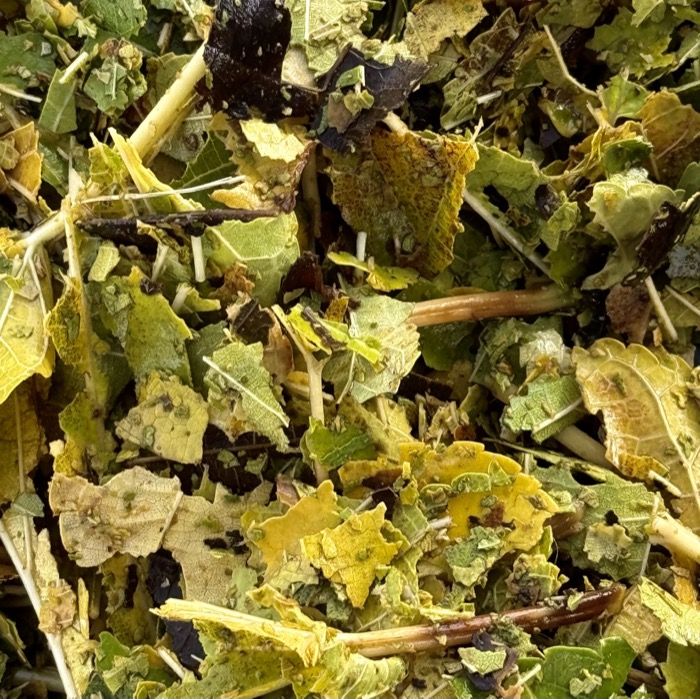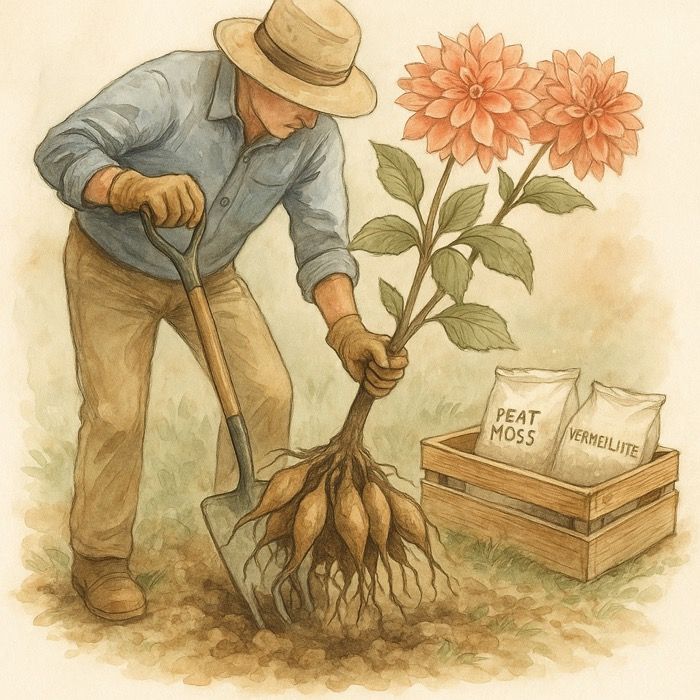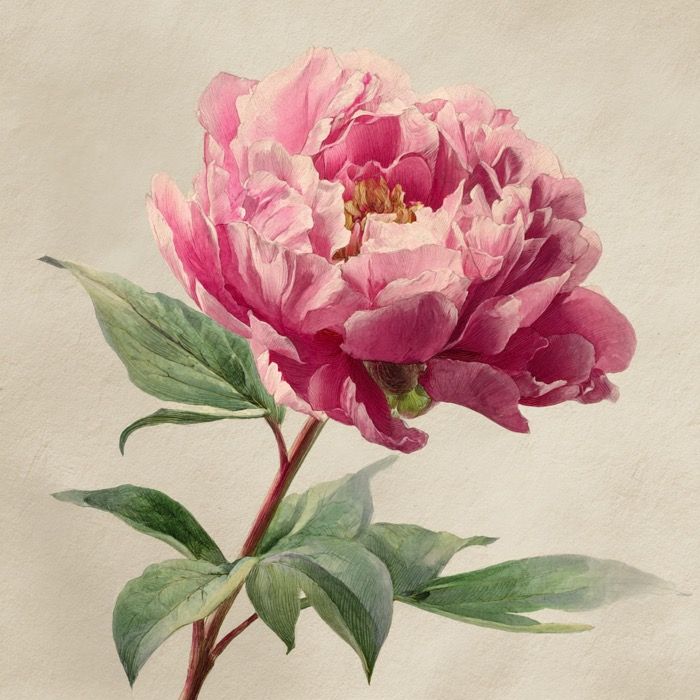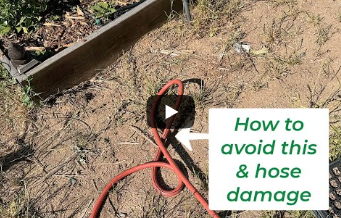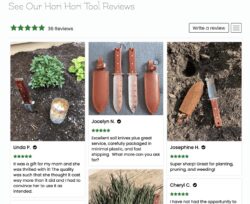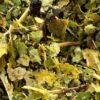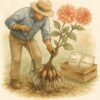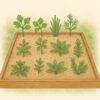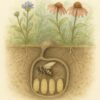Turn Fall Leaves into Garden Gold 🍂 | The Simple Trick Every Gardener Should Know
Every autumn, gardeners face the same challenge: massive piles of fallen leaves. If you’re like most people, you bag them up and send them off, viewing them as yard waste. But what if I told you that you are literally throwing away free fertilizer, rich mulch, and the best compost ingredient nature provides?
Fallen leaves are one of nature’s greatest gifts, and with one simple trick—using only a garbage can and a string trimmer—you can transform those bulky piles into “garden gold” in minutes.
The Cost of Tossing Leaves: Why Waste Nature’s Nutrient Bank
Most of us toss leaves because we don’t realize their immense value, or we’ve had bad experiences with them clumping up.
When you leave whole, un-shredded leaves on the lawn or in garden beds, they compact easily, blocking air and moisture from reaching the soil and turf beneath. They also take a painfully long time to break down.
However, in nature, fallen leaves never go to waste. They are the forest’s compost, forming a rich, dark layer of organic matter that insulates roots, retains moisture, and feeds an entire network of beneficial microbes. This process is why woodland soil is dark, rich, and full of life—and you can replicate it in your garden.
Why Shredding Leaves is the Key to Fast Compost
The magic of unlocking the leaves’ potential lies in shredding.
Shredding leaves is the single most important step because it dramatically increases the surface area. Think about a whole leaf versus a thousand tiny pieces of that same leaf. The tiny pieces provide vastly more surface area for the beneficial fungi and bacteria (microbes) to grab onto and start working their magic.
This jump-starts the decomposition process. Oxygen flows freely through the smaller pieces, and within a few weeks, those shreds begin turning into leaf mold—a dark, earthy, magical material that holds moisture like a sponge and continuously feeds the soil.
DIY Leaf Shredder: The Garbage Can Trick
You don’t need to spend hundreds of dollars on a dedicated leaf shredder. The best tool might already be in your shed: a string trimmer (or weed-whacker) and a clean garbage can.
How to Shred Leaves in Under a Minute (Safety First!)
- Gather Dry Leaves: This method works best with dry leaves. If your leaves are damp, spread them out on a tarp in the sun for an afternoon.
- Fill the Can: Fill a sturdy plastic garbage can approximately halfway with dry leaves.
- Insert the Trimmer: Put on your safety goggles! Lower your string trimmer (gas or electric) into the can, holding it like an immersion blender.
- Blend: Turn on the trimmer and move it up and down through the leaves. The rotating string acts like a set of high-speed blades, pulverizing the leaves instantly.
- Check: In less than 60 seconds, you’ll have fine, fluffy leaf bits ready to use.
Turn Shreds into Compost: The 3:1 Rule
Shredded leaves are essential for composting, but you can’t just use leaves alone. Composting requires a balance of materials, famously categorized as “Browns” and “Greens.”
- Browns (Carbon): This is your shredded leaf base. Carbon-rich materials provide energy for the microbes and add bulk and air pockets to the pile.
- Greens (Nitrogen): These are nitrogen-rich materials that provide protein to the microbes, which is necessary for them to reproduce and “cook” the compost pile. Examples include grass clippings, fresh vegetable scraps, and coffee grounds.
The golden rule for home composting is to aim for a ratio of 3 parts browns to 1 part greens. Shredded leaves are the perfect brown material, preventing your pile from smelling and ensuring proper airflow.
The Master Gardener’s “Cheat Code”: Free Coffee Grounds
The best way to balance your carbon-heavy leaves is with high-nitrogen greens. And here’s the ultimate composting cheat code: used coffee grounds.
Even though they look brown, used coffee grounds are packed with nitrogen, making them a powerful green ingredient. They mix seamlessly with your fluffy shredded leaves. Best of all, they’re free! Most local coffee shops and cafés are thrilled to give away their spent grounds. Just bring a bucket and ask!
You can also add other brown materials to your leaf base, such as tearing up or shredding plain cardboard. This adds extra structure, helps maintain air pockets, and balances the high nitrogen from your greens.
Immediate Garden Use: Mulch & Humus
Shredded leaves aren’t only for compost—you can use them right away without waiting for them to break down completely.
- Protective Mulch: Spread a layer of shredded leaves 2–3 inches deep around perennials, shrubs, and trees. Unlike whole leaves, which clump and smother, shredded leaves create an airy blanket that insulates roots from winter temperature swings, conserves water by shading the soil, and blocks weeds from germinating.
- Soil Improvement (Humus): In the late fall, till shredded leaves lightly into your empty garden beds. Over the winter, the leaves will continue to break down, disappearing by spring and leaving behind rich, crumbly humus. This instantly improves the fertility and texture of your soil.
The Science of Living Soil
Why does this simple act of shredding matter so much? It all comes down to soil structure and life.
As shredded leaves and other organic matter break down, they dramatically improve the architecture of your soil. They create porosity—space for air and water—which is crucial for healthy root development and better drainage (no more muddy patches!).
More importantly, you are feeding the fungi and microbes (like mycorrhizae) that turn inert dirt into living soil. When these tiny organisms thrive, the result is healthier roots, better nutrient absorption, and far more resilient plants.
So this fall, skip the bags, grab your string trimmer, and let your garden reap the rewards. Nature’s been recycling its nutrients forever—we’re just finally catching up.
🌿 Learn more about sustainable gardening at The Celtic Farm →Gardening Youtube Channel 🛠️ Shop garden tools → The Celtic Farm Garden Shop
More From Our Master Gardener
Recent Posts

Turn Fall Leaves into Garden Gold 🍂 | The Simple Trick Every Gardener Should Know

When and How to Dig Up Dahlias – The Best Time, Storage, and Overwintering Guide for 2025 Blooms

When and How to Dig Up Peonies – A Step-by-Step Guide for Vibrant Blooms

Best Herbs to Plant in October 2025 – Fall Herb Gardening in Raised Beds Made Easy

The Bee Underground – Meet the Solitary Bees Living Beneath the Soil


